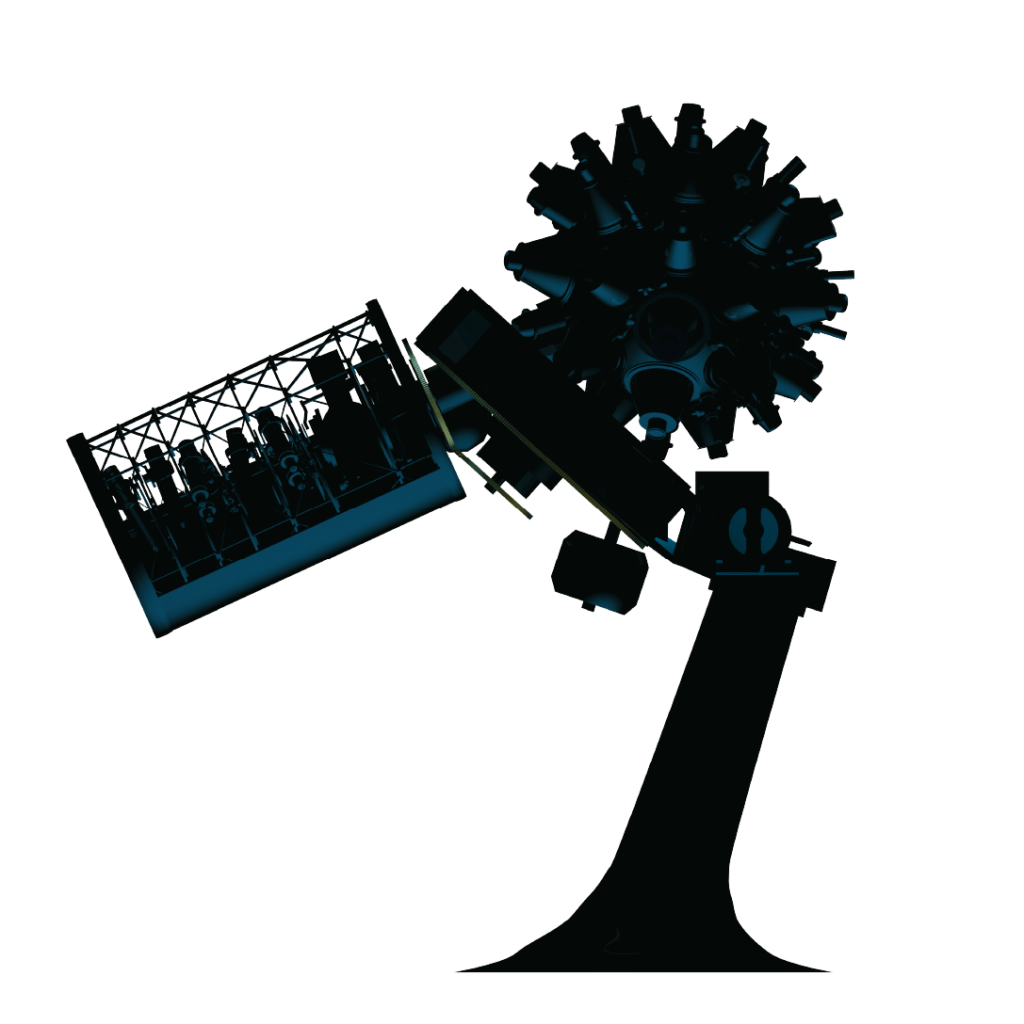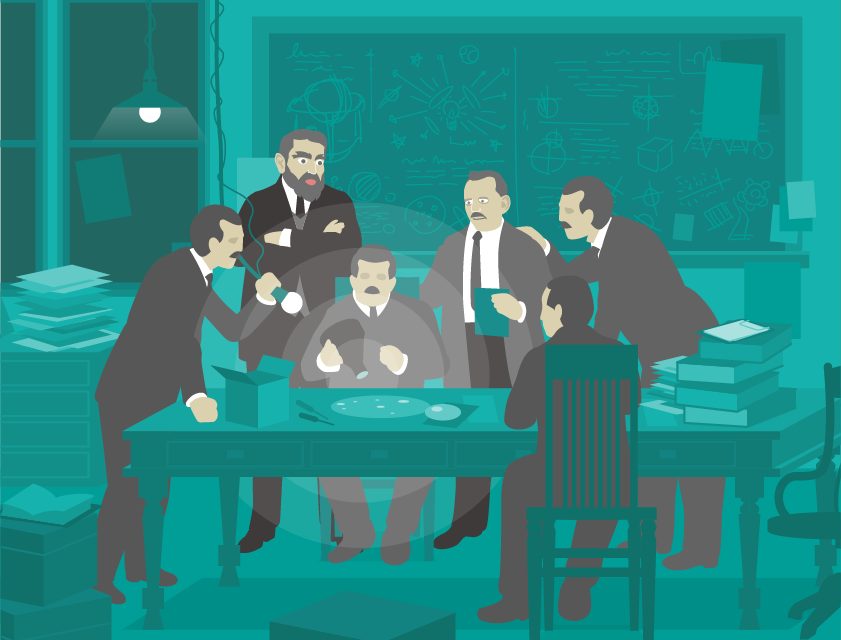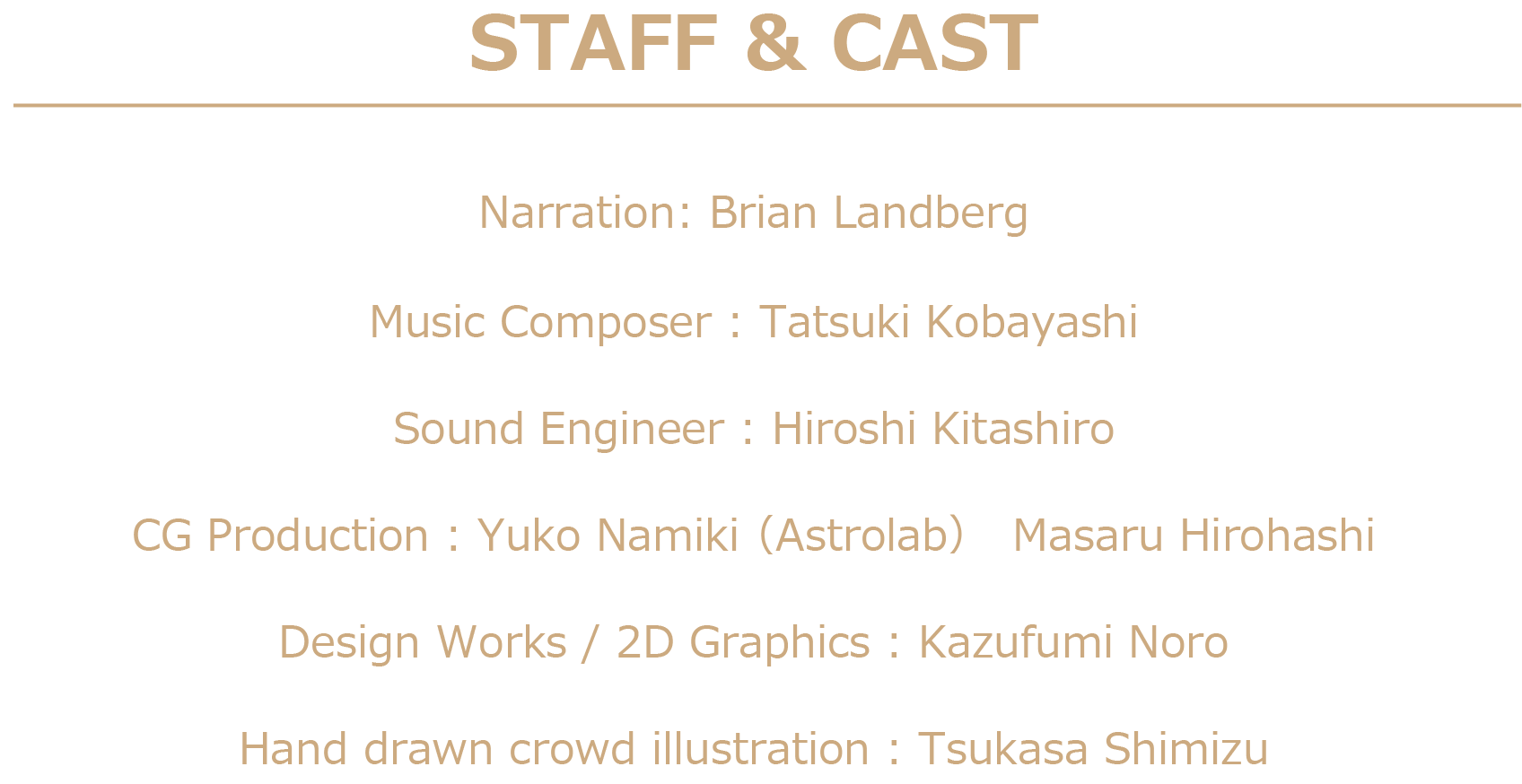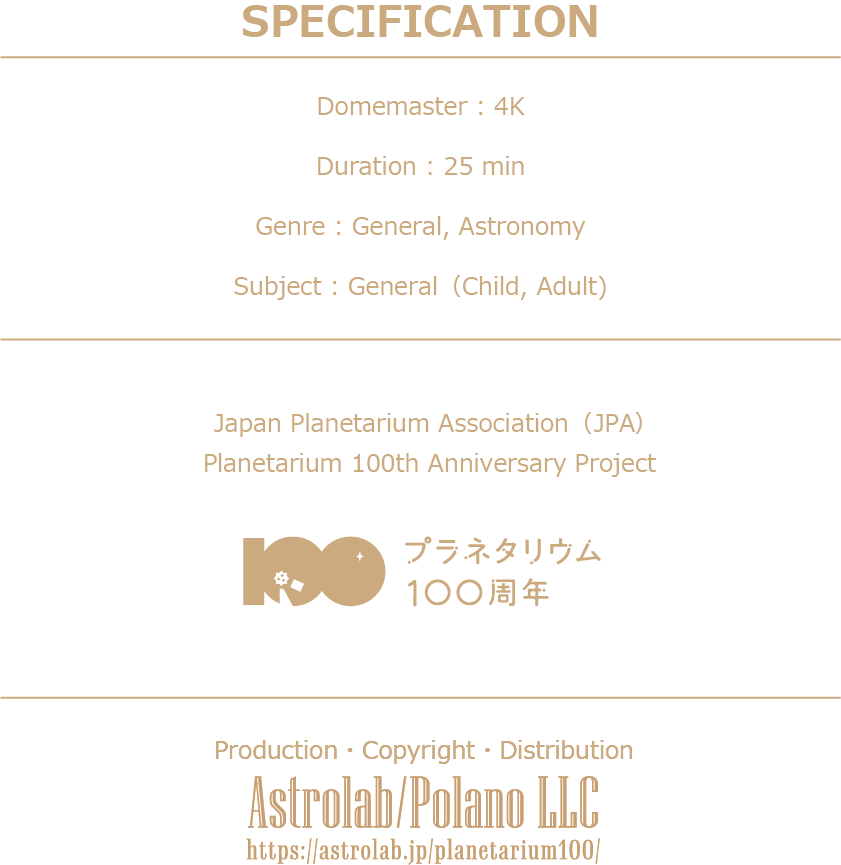

Even during rain or in the daytime, in a planetarium, we can enjoy a sky, full of stars. But, this wonderful invention did not simply appear out of nowhere. Throughout history, humanity has been fascinated by the night sky, and various mechanical models were built, ultimately leading to a magical innovation, to dynamically represent the starry sky. In ancient Greece, celestial globes, orreries, and astrolabes were created for simulating the motion of stars and planets. How have these models contributed to the development of the planetariums of today? In this program, you can travel back in time to 100 years ago. Following the notes of the original inventors, you can re-live the challenges and triumphs behind the birth of the modern planetarium.


Based on original blueprints, we explore the development and functions of the earliest projection planetariums from 100 years ago, focusing especially on the innovative “star-ball” and “planetary projectors”. Japan was an early adopter, and we describe Japan’s first planetarium, installed in 1937 at the Osaka Science Museum. Using 3D computer graphics blended with 2D animations and sketches, this program reproduces the the experinece of that period, evoking both nostalgic and novel images.



Before the invention of projection planetariums, there were generally 2 types of mechanical models of the universe. One type was the “celestial globe”, for depicting the starry sky. The other type was a mechanical representation of the motion of the sun and planets, called an “orrery” or “astrolabe”. In Greek myths, the titan Atlas carried a celestial globe on his shoulders. Before the invention of the optical telescope, the astronomer Tycho Brahe used a celestial globe to aid in his observations. An ancient Greek artifact salvaged from a shipwreck in the Aegean Sea turned out to be a highly precise computer, the Antikythera mechanism. Large, room-sized models, such as the Globe of Gottorf and Eisinga Planetarium were also developed during the European renaissance period.

At the turn of 20th century, science began to transform the lifestyles of humanity.
Oskar von Miller (1855-1934), founder of the Deutsches Museum, had a dream to exhibit science and technology in the same way that other museums display art works.
To make a dynamic simulator of the night sky, a "model of the universe", for explaining the concepts and results of astronomical science… This was the idea of von Miller, which spawned the birth of the modern planetarium.
For the realization of a "model of the universe", von Miller contracted the Carl Zeiss company, which still kept many historical notes and records from that pivotal time, 100 years ago. This program examines the original design drawings and calculations, bringing to light the innovations and challenges that enabled the birth of the modern planetarium, which since has proliferated all over the world, for the enjoyment and education of millions of people.





Screening Theatre Information
Cosmo Planetarium Shibuya Sep.11, 2023 Galaxcity Oct.28&29,2023 Tamarokuto Science Center Nov.7,2023 - Katsushika City Museum Jan.12,2024 -